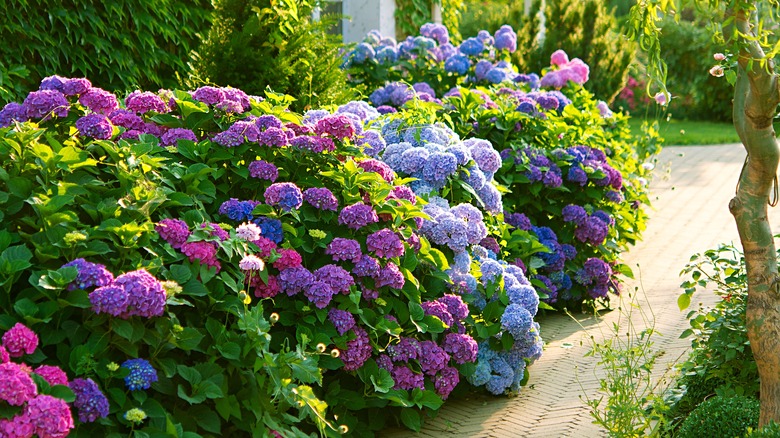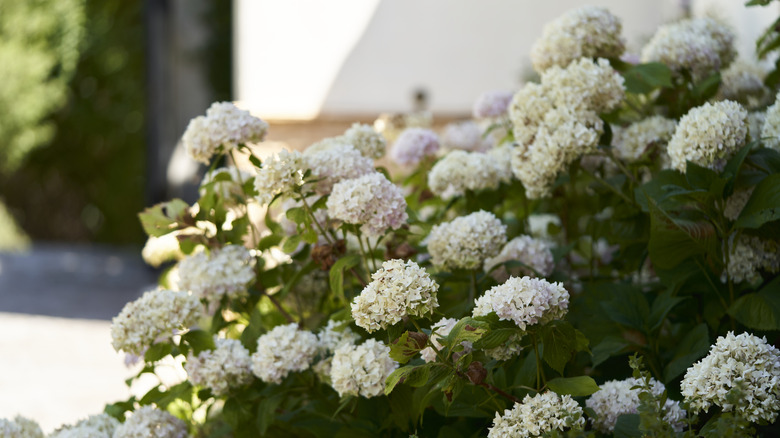The No-Cut Way To Easily Propagate Hydrangeas For A Fuller Garden
Nothing says summer like a garden with a row of hydrangeas, bursting with lush green foliage and candy-hued pops of pink, blue, and violet. Whether you already have one and are looking to expand your collection, or you're envious of your friends' impressive blooms, hydrangea bushes are relatively easy to propagate — all you need is a leaf and a rock.
This no-cut propagation method is simple: tuck a hydrangea leaf that's still attached to the plant under a rock right in the soil. Over time, this leaf should take root and begin to grow into a new plant, no greenhouse or fancy tools required.
After it sprouts and has a bit of time to grow, it can then be transplanted to another area of your garden — or given to a family member or a friend who's looking to design and plant their own perfect cottage garden. If you're looking for an easy and affordable way to expand your hydrangea collection, this low-maintenance method might just be your next garden go-to.
How to propagate a hydrangea from a leaf and a rock
So, is it really possible to propagate a hydrangea from just a leaf? Yes — as long as you know exactly how to layer it. Young shoots that can be bent to ground level are best. They can then be pressed into moist soil while still attached to the parent plant, before placing a rock on top of the node and stem. From there, be sure to keep the soil damp (but not soaking), and wait patiently for new growth to appear.
Within a few months, you should see roots start to develop at the buried section and, once well established, this new plant can be detached from the parent plant and transplanted to its new home in your garden. It really is that simple. Keep in mind that hydrangeas can grow up to 6 feet in height and just as much width, so ensure there's plenty of space between them.
Why this no-cut method works
Layering is an effective method for propagating hydrangeas as it allows the new plant to receive nutrients from the parent plant during the root growth stage. This method is most successful when done in early to mid-summer, while the stems are still flexible. Applying a bit of rooting hormone also helps boost the chances of new roots forming. This technique works especially well with panicle and bigleaf hydrangea varieties, which respond best to this hands-on propagation method.
Layering creates a genetic replica of the parent plant, meaning the new hydrangea will be identical in every way: color, shape, and growth habit. Because the new plant is essentially a clone of the parent plant, you won't be gambling on seed variations or hybrid surprises, which means it's especially appealing for gardeners who want a coordinated landscape on a budget, or want to repeat a favorite variety across multiple spots in their yard.

